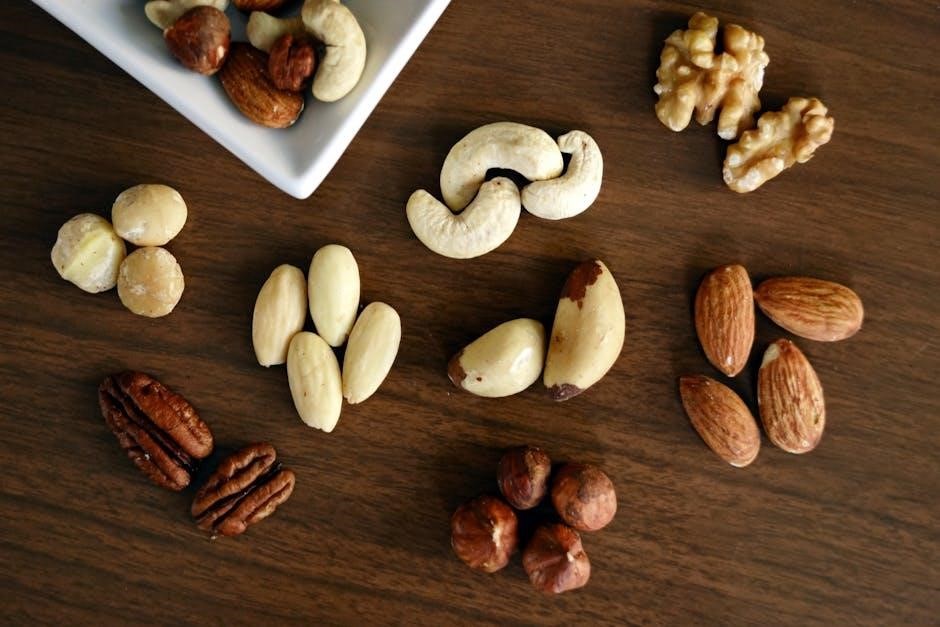To manage liver health, download a comprehensive fatty liver diet plan pdf with balanced meal plans and liver-friendly foods, including tips and recipes for reducing inflammation and promoting better liver function naturally always.
Understanding Fatty Liver Disease
Fatty liver disease is a condition where excess fat builds up in the liver, leading to inflammation and damage. This condition can be caused by various factors, including metabolic disorders, obesity, and insulin resistance. Metabolic Associated Fatty Liver Disease (MAFLD) is a type of fatty liver disease that is closely linked to metabolic syndrome. Understanding the causes and risk factors of fatty liver disease is crucial in managing and preventing the condition. A comprehensive fatty liver diet plan pdf can provide valuable information on the disease, including its symptoms, diagnosis, and treatment options. By understanding the disease, individuals can take the necessary steps to prevent or manage fatty liver disease, reducing the risk of complications and improving overall liver health. A healthy diet and lifestyle are essential in managing fatty liver disease, and a well-planned diet can help alleviate symptoms and promote liver function.
Importance of Diet in Managing Fatty Liver Disease
A well-planned diet plays a crucial role in managing fatty liver disease, as it helps to reduce liver inflammation and promote overall health. A comprehensive fatty liver diet plan pdf can provide guidance on the types of foods to eat and avoid, as well as tips for meal planning and preparation. Eating a balanced diet that is high in fiber, low in saturated fats, and rich in antioxidants can help to alleviate symptoms of fatty liver disease. Additionally, a healthy diet can help to support weight loss, improve insulin sensitivity, and reduce the risk of complications. By making informed food choices, individuals with fatty liver disease can take control of their condition and improve their overall quality of life. A diet plan pdf can serve as a valuable resource, providing a clear and concise guide to healthy eating and lifestyle habits.

Components of a Fatty Liver Diet Plan
A fatty liver diet plan includes meal planning and nutrition guidance always using a comprehensive pdf template online.
Liver-Friendly Foods
A fatty liver diet plan includes foods that are rich in fiber, such as fruits and vegetables, and whole grains, which can help reduce inflammation and promote liver health.
Foods high in antioxidants, such as berries and leafy greens, can also help protect the liver from damage.
A diet that is high in omega-3 fatty acids, such as those found in fatty fish, can also help reduce inflammation and improve liver function.
In addition to these foods, a fatty liver diet plan may also include foods that are low in saturated and trans fats, such as lean proteins and healthy oils.
A comprehensive fatty liver diet plan pdf can provide more information on the best foods to eat and how to incorporate them into a healthy diet;
By following a liver-friendly diet, individuals can help manage their fatty liver disease and improve their overall health.
A healthy diet is an important part of managing fatty liver disease and can help reduce the risk of complications.
Foods to Avoid in a Fatty Liver Diet
When following a fatty liver diet, there are certain foods that should be avoided, including those high in saturated and trans fats, such as fried foods and processed meats.
Sugary drinks and foods high in added sugars can also exacerbate fatty liver disease.
Foods high in sodium, such as canned goods and processed snacks, can also be detrimental to liver health.
In addition, foods high in cholesterol, such as egg yolks and organ meats, should be limited.
A comprehensive fatty liver diet plan pdf can provide more information on foods to avoid and how to make healthy substitutions.
By avoiding these foods, individuals can help manage their fatty liver disease and improve their overall health.
A healthy diet is an important part of managing fatty liver disease, and avoiding unhealthy foods is a crucial step in achieving this goal, with a focus on nutrition and lifestyle changes.

Nutrition and Lifestyle Information for MAFLD
Metabolic associated fatty liver disease requires specific nutrition and lifestyle guidance for management and improvement of liver health always with careful planning and attention to detail naturally.
What is Metabolic Associated Fatty Liver Disease
Metabolic associated fatty liver disease, also known as MAFLD, is a condition where excess fat builds up in the liver, leading to inflammation and damage. This condition is closely linked to metabolic syndrome, a cluster of conditions that increase the risk of developing type 2 diabetes and cardiovascular disease. The excess fat in the liver can cause scarring and inflammation, leading to liver damage and potentially even liver failure. MAFLD is a growing health concern, and it is essential to understand the causes, symptoms, and treatment options available. A comprehensive fatty liver diet plan pdf can provide valuable information and guidance on managing MAFLD through dietary changes and lifestyle modifications. By understanding what MAFLD is and how it affects the liver, individuals can take the first step towards managing their condition and improving their overall health. With the right approach, it is possible to reduce liver inflammation and promote better liver function.
Risk Factors for MAFLD
Risk factors for metabolic associated fatty liver disease, or MAFLD, include a range of genetic, environmental, and lifestyle factors. Certain genetic mutations can increase the risk of developing MAFLD, as can a family history of the condition. Environmental and lifestyle factors, such as a diet high in sugar and saturated fats, lack of physical activity, and obesity, can also contribute to the development of MAFLD. Additionally, certain medical conditions, such as type 2 diabetes and high blood pressure, can increase the risk of MAFLD. Understanding these risk factors is essential for preventing and managing the condition. A comprehensive fatty liver diet plan pdf can provide valuable information on reducing the risk of MAFLD through dietary changes and lifestyle modifications. By identifying and addressing these risk factors, individuals can take steps to protect their liver health and reduce their risk of developing MAFLD. Regular health check-ups are also crucial.

Creating a Personalized Fatty Liver Diet Plan
Use a fillable 21-day fatty liver diet plan template to create a personalized plan with specific health needs and dietary preferences always considered carefully online.
Using a 21-Day Fatty Liver Diet Plan Template
To create a personalized fatty liver diet plan, a 21-day template can be used, which is fillable and allows for customization according to individual health needs and dietary preferences.
This template provides a structured approach to planning meals and snacks, ensuring that the diet is well-balanced and nutritious.
The template can be downloaded from online resources and filled out with the help of a healthcare professional.
It includes space for noting food preferences, allergies, and lifestyle habits, making it easy to create a tailored plan.
The 21-day template also provides a sample meal plan, which can be adjusted according to individual needs.
By using this template, individuals can take control of their diet and make informed food choices to manage their fatty liver condition effectively.
The template is a useful tool for healthcare professionals and individuals alike, promoting healthy eating habits and lifestyle changes.
It is essential to consult with a healthcare professional before starting any new diet plan.
A well-planned diet is crucial for managing fatty liver disease, and the 21-day template can be a valuable resource in this journey.
With the right guidance and support, individuals can make positive changes to their diet and improve their overall health.
Customizing the Plan for Individual Health Needs
Customizing a fatty liver diet plan involves considering individual health needs, such as food allergies, dietary restrictions, and lifestyle habits.
A healthcare professional can help create a atrocities plan that takes into account these factors, ensuring the diet is safe and effective;
The plan should be tailored to meet the individual’s nutritional needs, promoting healthy weight loss and improving liver function.
It is essential to monitor progress and make adjustments to the plan as needed, with regular check-ins with a healthcare professional.
By customizing the plan, individuals can increase their chances of success and improve their overall health.
A personalized approach to diet planning can help individuals with fatty liver disease make sustainable lifestyle changes, reducing the risk of complications and improving quality of life.
With the right support and guidance, individuals can create a customized diet plan that meets their unique needs and promotes optimal health.

Expert Recommendations for Fatty Liver Diet
Experts recommend a diet high in oleic acid, with balanced nutrition and lifestyle changes for optimal liver health always using a fatty liver diet pdf for guidance and support.
Dietary Recommendations from the Fatty Liver Foundation
The Fatty Liver Foundation provides guidance on dietary recommendations, suggesting a diet high in oleic acid, primarily from extra virgin oil, and low in saturated and trans fats for optimal liver health.
The foundation also recommends a balance of omega 3 and 6 fatty acids, with approximately equal amounts of each, to help reduce inflammation and promote better liver function.
A fatty liver diet pdf is available, outlining the foundation’s recommendations in detail, including a list of liver-friendly foods and a sample meal plan to help individuals get started on their journey to improved liver health.
By following these dietary recommendations, individuals can take a proactive approach to managing their fatty liver disease and improving their overall health and wellbeing.
The foundation’s guidelines are based on the latest research and are designed to be easy to follow and incorporate into daily life.

No Responses